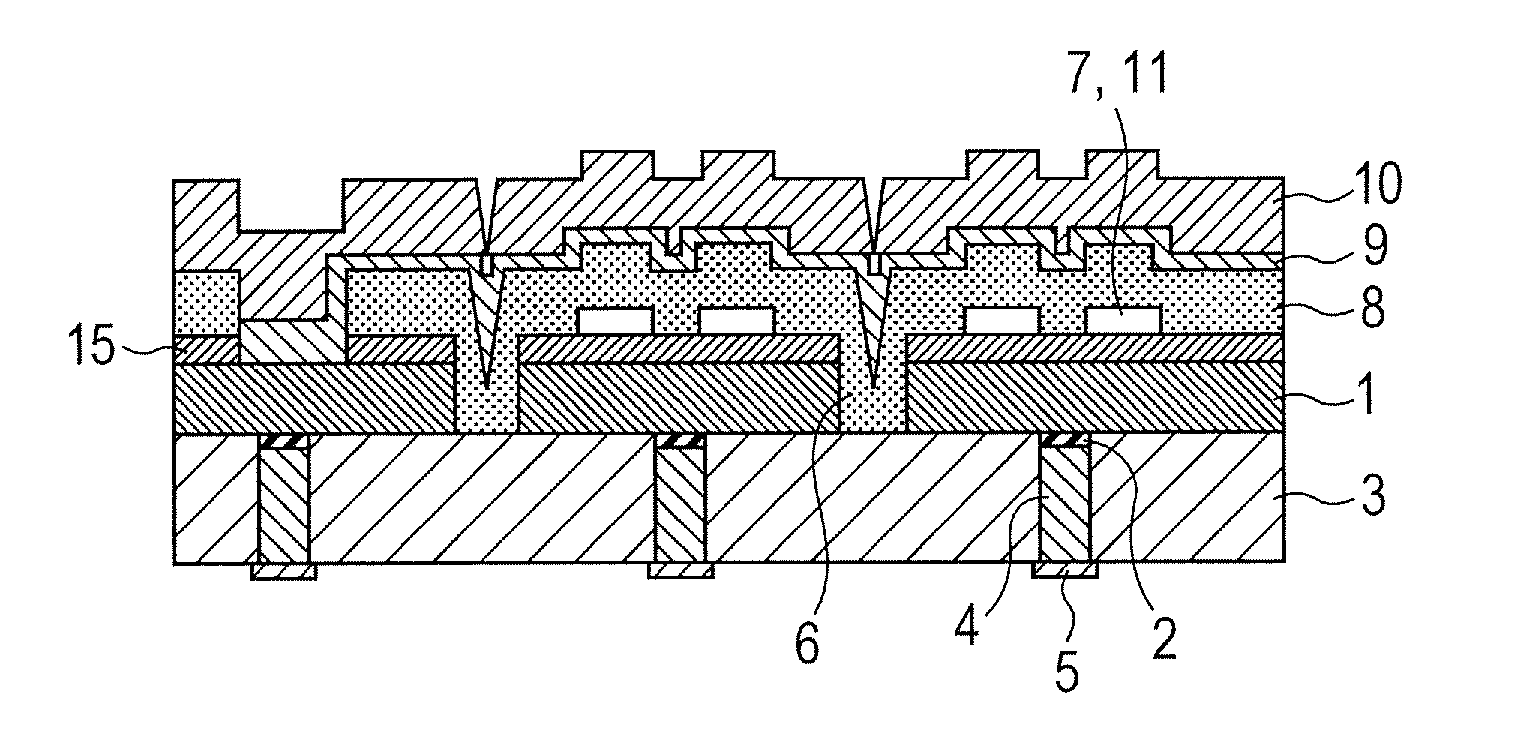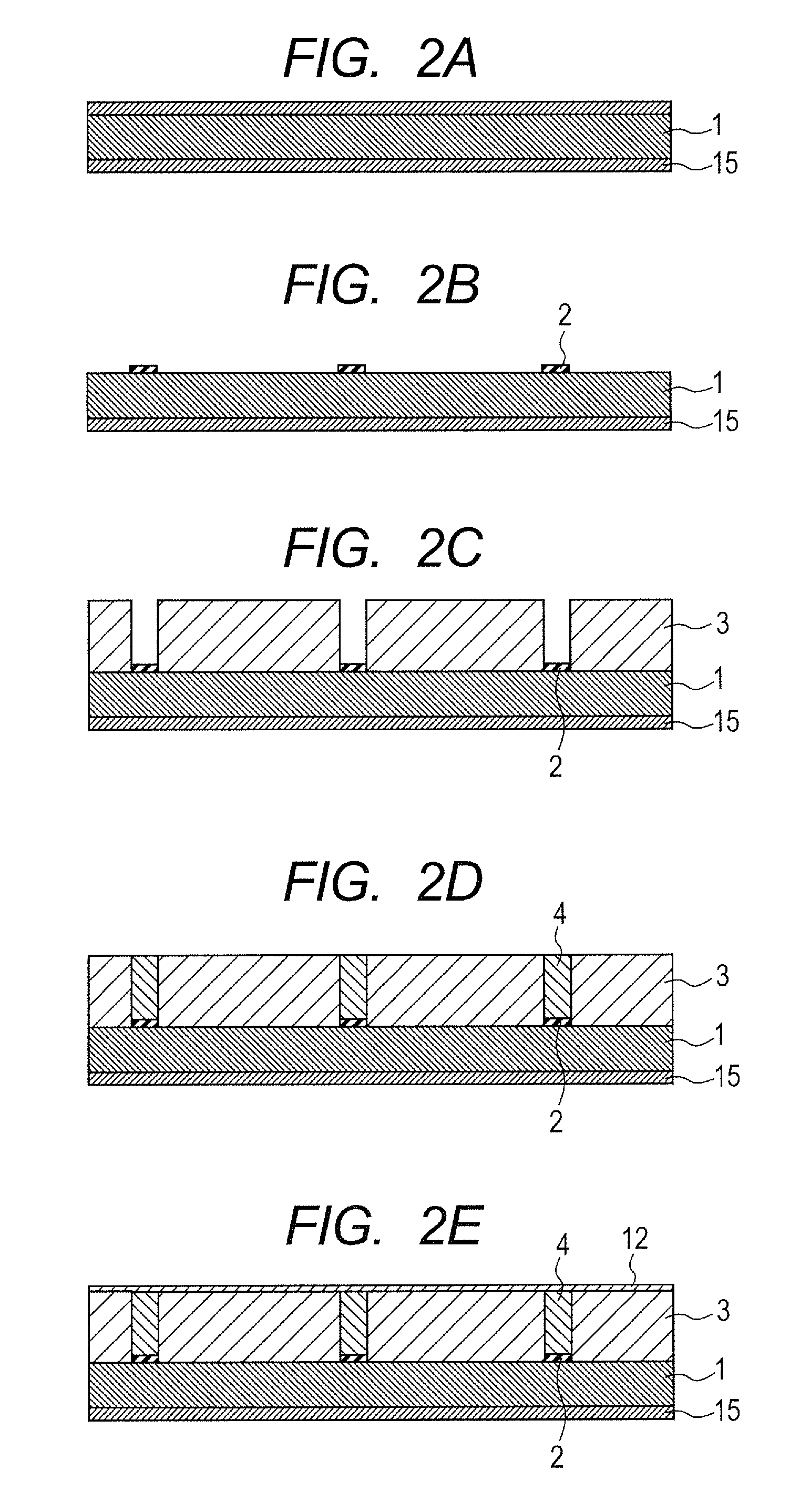Method for manufacturing an electromechanical transducer
a manufacturing method and electromechanical technology, applied in the field of electromechanical transducers, can solve the problems of uneven formation, limited flatness of the substrate surface, lowering of the performance of the cmut, etc., and achieve the effect of increasing the number of cells in the element of the electromechanical transducer, not impaired by flatness, and improving the flatness of the electroconductive substra
- Summary
- Abstract
- Description
- Claims
- Application Information
AI Technical Summary
Benefits of technology
Problems solved by technology
Method used
Image
Examples
exemplary embodiment 1
[0028]The exemplary embodiment 1 is concerned to a method for manufacturing the CMUT that is produced on a substrate which is formed of a low-resistance Si substrate and an insulative glass substrate and to which a through wiring is connected. Although a Pyrex (registered trademark) glass is used as an insulative substrate 3 provided with a through hole in the present exemplary embodiment, a basic manufacturing method is the same even when another material such as quartz glass is used.
[0029]FIGS. 2A to 2M are views for describing a process flow of the present exemplary embodiment. Although a cross section of a device having two elements is illustrated in these views for simplification of the drawings, other elements can also be produced in a similar way. Firstly, an Si substrate which becomes a substrate 1 is prepared (FIG. 2A). Since the substrate 1 serves also as a first electrode which becomes a lower electrode, it is desirably a substrate having a low resistivity. In the present...
exemplary embodiment 2
[0042]In a manufacturing method of Exemplary Embodiment 2, an insulative member which is an insulating layer is formed by applying a resin or a glass material having photosensitive characteristics onto a low-resistance Si substrate. Then, by patterning a through hole in the insulative member, a structure of a substrate to which a through wiring is connected is prepared, and CMUT is produced on the structure.
[0043]In the present exemplary embodiment, polyimide (commercially available product made by Toray Industries, Inc., Asahi Kasei Corporation, Hitachi Chemical Company, Ltd. or the like) is used as a photosensitive resin material. Although the polyimide is used here as the photosensitive resin material, KI-1000 series (made by Hitachi Chemical Company, Ltd.), TMMR (made by TOKYO OHKA KOGYO CO., LTD.), SU-8 (made by Kayaku MicroChem Corporation) and the like can also be used. Furthermore, a photosensitive dry film (commercial product made by Hitachi, Ltd., Asahi Kasei Corporation, ...
PUM
| Property | Measurement | Unit |
|---|---|---|
| resistivity | aaaaa | aaaaa |
| surface roughness Rms | aaaaa | aaaaa |
| thickness | aaaaa | aaaaa |
Abstract
Description
Claims
Application Information
 Login to View More
Login to View More - R&D
- Intellectual Property
- Life Sciences
- Materials
- Tech Scout
- Unparalleled Data Quality
- Higher Quality Content
- 60% Fewer Hallucinations
Browse by: Latest US Patents, China's latest patents, Technical Efficacy Thesaurus, Application Domain, Technology Topic, Popular Technical Reports.
© 2025 PatSnap. All rights reserved.Legal|Privacy policy|Modern Slavery Act Transparency Statement|Sitemap|About US| Contact US: help@patsnap.com



